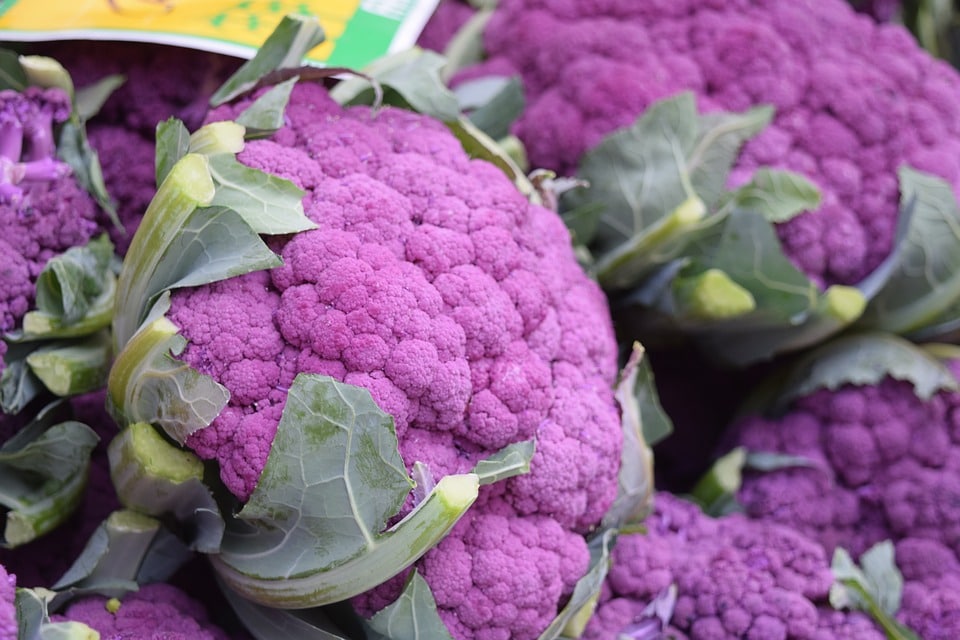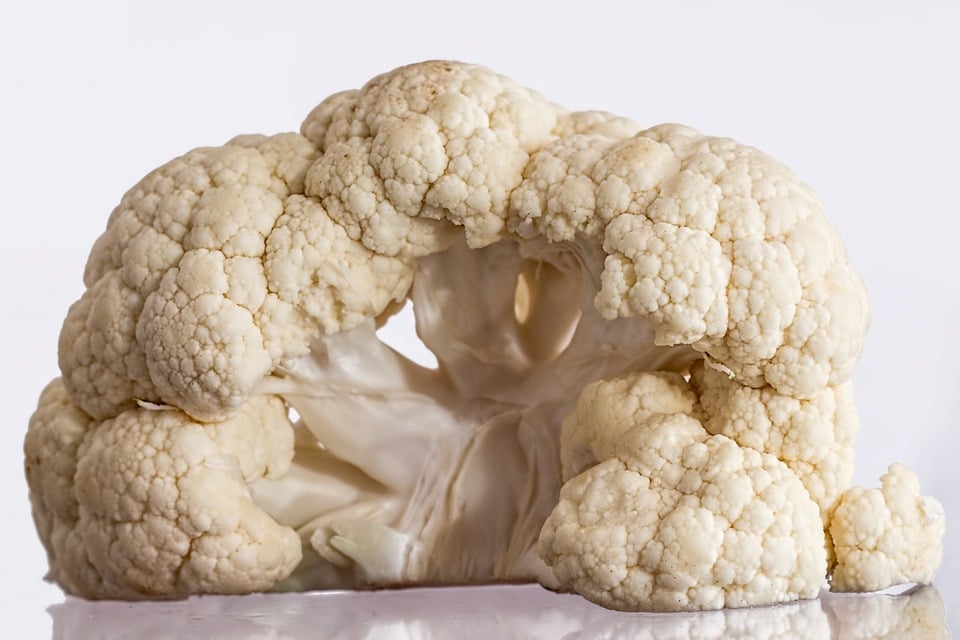A step by step guide for growing Hydroponic cauliflower
Today, we will go through the information of growing hydroponic cauliflower indoors. we also check what kind of nutrient soultion is used in hydroponic cauliflower plantation along with harvesting techniques. I hear children teasing each other, “if cauliflower can become pizza, then my friend you can do anything” well, sarcasm perfectly served. Known as a flower but doesn’t have a scent, mama’s favorite but children’s detest. Well yes, we are here talking about cauliflower. Cauliflower is a member of the brassica family, which also comprises kale, cabbage, kohlrabi, Brussels sprouts, and broccoli. It has a characteristically compact head composed of undeveloped flower buds known as curd that is high in vitamins and minerals and packed full of fiber, antioxidants, and phytochemicals.
Cauliflower plants thrive in cooler climates and do not do great in markedly hot or cold weather as in high temperatures, the head doesn’t mature properly and if it’s too cold, your cauliflower will bolt promptly. Try to keep the temperature consistent within a range of between 55 to 70°F which is perfectly supplemented with about six hours of direct sunlight or you can use grow lights for indoor systems simple fluorescent bulbs or LEDs work well.
It’s a good fortune that cauliflower is one of the Hydroponic vegetables which performs well in any hydroponic system as we are already aware of reasons behind the boom of Hydroponic crops. So today we will discuss Cauliflower indoor hydroponics as a complete guide for outdoors as well.
Cauliflower is a great outdoor hydroponic crop for mild climates because of its size and requirement of large space for its growth. You could easily grow cauliflower in a basic outdoor hydroponic set-up if you have less indoor space for the hydroponic system. So why wait, let us dig into the details of growing hydroponic cauliflower.

Types of cauliflower for Hydroponics:
Usually, differ on the basis of the color of the head
- Snow Crown
- Snowball
- Denali
- Panther
- Candid Charm
- Skywalker
- Orange Burst
- Graffiti
Planting
It is recommended to start cauliflower from transplants rather than seeds. When you have established hydroponic system outdoors it is advised to transplant 2 to 4 weeks prior to the average frost date in the spring, no sooner not much later.
When transplanting you should maintain a space of 18 to 24 inches between the transplants which allow them to grow with full vigor and size.
You may also like How to Grow Lemon Grass in Pots.
Raising transplant from seeds:
Many of the cauliflower seeds available in stores are hybrids, so if you want to save seed, ensure that you are buying seeds labeled as open-pollinated, otherwise, there is no assurance that the plant you grow will produce what you are expecting moreover hybrid seeds are required to be sown new every year. The seeds are borne in a small and elongated pod. Once the pod matures and turns brown, you can split it open and harvest the seeds save them in a paper bag or envelope in a dry, dark place. Generally, this is the easiest way to store seeds to start a cauliflower plant from seed.
When propagating with seeds sow them about 4 to 5 weeks before the plants are needed as it takes time to germinate.
Make sure you water the seeds during their germination to promote its growth. Once they become seedlings its good transplant them to their permanent place in the system. If you are raising seedlings in the soil make sure you wash off all soil particles before transplanting as soil invites different soil-borne disease and insect-pest.
Planting: care, nutrient, and watering
For obtaining good yield you should maintain the temperature consistent a range of between 55 and 70° Fahrenheit is ideal for plant growth complemented with about six hours of direct sunlight.
Cauliflower grows up in developmental stages starting with as a loose head which contracts and tightens as it grows.
If you are raising the common the white variety of cauliflower, tie its outer leaves together over the developing head when it is about 2-3 inches in diameter. This is a traditional practice done in cauliflower and is known as blanching. Blanching has no relation with the head development or nutritional content. However, if it is not blanched, the curds will be greenish-brown in color rather than white and the flavor will be stronger, almost bitter and undesirable. The simplest way to do this is to tie the leaves using rubber bands, tape or twine. If you are using rubber bands, ensure that they are strong enough to contain the growing leaves and heads. The leaves must be tied loosely to provide curds plenty of room to grow. Cauliflower is particularly susceptible to fungus, so the second condition of when to blanch a cauliflower would be picking the driest time of the day. As we don’t want to trap moisture inside the leaf cover else presence of moisture condition will promote fungal growth. Thanks to our hard working breeders there are varieties that have the property of self-blanching. Their leaves have been bred to curl up by itself over the developing head and for the most part, are successful. So you can grow such varieties.
It responds well to the right amount of water and nutrients. You can find a good solution of hydroponic nutrients at any hydroponic retailer or online stores even some nutrient formula especially for cauliflower is also available with user manual. For better nutrient uptake keep nutrient solution pH between the range of 5.5 and 6.5.
Cauliflower plants have large root systems, so make sure you provide adequate space for its root development and growth. Best hydroponic system for cauliflower are those which will provide sufficient space to the plant to grow system like Deepwater culture system, ebb, and flow system and NFT (with thick pipes) are desirable.
The broccoli plant does not like a lot of water like Hydroponic broccoli. So it becomes difficult to control water levels without drying out the roots. In order to do this, use gravel in the system on which roots will be suspended in the hydroponic nutrient solution. Netting can be done as well but is not as effective as gravel is in facilitating the roots to have as much water as they want. The drip irrigation system has an advantage as it will make sure the rest of the plant gets hydrated as much without becoming oversaturated which may give rise to root rot.
You may be interested in Growing Mustard Greens, Planting, Care, Harvesting.
The best part about growing in a hydroponic environment is your crop will not be exposed to any pests so make sure to be vigilant and if any insect makes an entry to the system you remove it before it has chance to lay eggs.
How to harvest and store Hydroponic cauliflower

When the heads are compact, white, and firm, then it is the right time to harvest them. Ideally, the heads can grow up to 6 to 8 inches in diameter. Cauliflowers become ready for harvest 7 to 12 days after blanching. Overall most varieties may take 75 to 90 days to mature from planting.
Simply cut the heads off the plant with a large knife. Be sure to keep some of the leaves around the head so that it remains protected.
If the heads are too small in size but have by now have started to open up, they will not grow further and should be harvested.
If you want to store cauliflower, you can keep the head in a plastic bag and store it in the refrigerator. This can easily last for about a week.
For long-term storage, you can also freeze them or pickle the heads.
That’s all folks about techniques of growing hydroponic cauliflower indoors or outdoors.
You may also be interested in Vegetable Seed Germination, Sowing Time.
Which group of vegetables can grown together in a single poly house hydroponically?